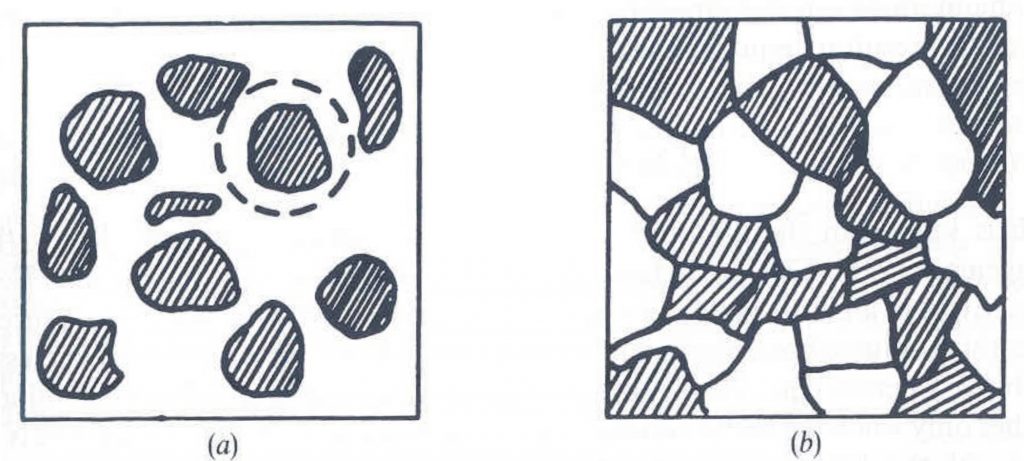- Proposed the mechanisms of fluctuation-induced tunneling and structure-correlated hopping that led to the explanation of electrical conduction behaviors in diverse disordered systems such as conducting polymers, carbon-black composites, granular metals, etc.
Key publications:
- “Hopping Conductivity in Granular Metals“, Ping Sheng, B. Abeles and Y. Arie, Phys. Rev. Lett. 31, 44 (1973).
- “Fluctuation-Induced Tunneling Conduction in Carbon-Polyvinylchloride Composites“, Ping Sheng, E. K. Sichel and J. Gittleman, Phys. Rev. Lett. 40, 1197 (1978).
- “Fluctuation-Induced Tunneling Conduction in Disordered Materials“, Ping Sheng, Phys. Rev. B21, 2180 (1980).
- “Electronic Transport in Granular Metal Films“, Ping Sheng, Feature Article, Philos. Mag. B65, 357 (1992).
- Proposed effective medium theories that give microstructure-based explanations to observed optical, electrical, and elastic properties of composites, with granular metals and sedimentary rocks in particular.
Key publications:
- “Theory for the Dielectric Function of Granular Composite Media“, Ping Sheng, Phys. Rev. Lett. 45, 60 (1980).
- “Effective-Medium Theory of Sedimentary Rocks“, Ping Sheng, Phys. Rev. B4l, 4507 (1990).
- Found a two-parameter universal scaling solution for the dynamic (fluid) permeability function in porous media with arbitrary microstructures.
Key publications:
- “Dynamic Permeability in Porous Media“, Ping Sheng and M. Y. Zhou, Phys. Rev. Lett. 61, 1591 (1988).
- “First-Principles Calculations of Dynamic Permeability in Porous media“, M. Y. Zhou and Ping Sheng, Phys. Rev. B39, 12027 (1989).
- Uncovered the bimodal nature of the local field distribution in disordered systems.
Key publication:
- “Local-Field Distribution in Random Dielectric Media“, Ping Sheng and Z. Chen, Phys. Rev. Lett. 60, 227 (1988).
